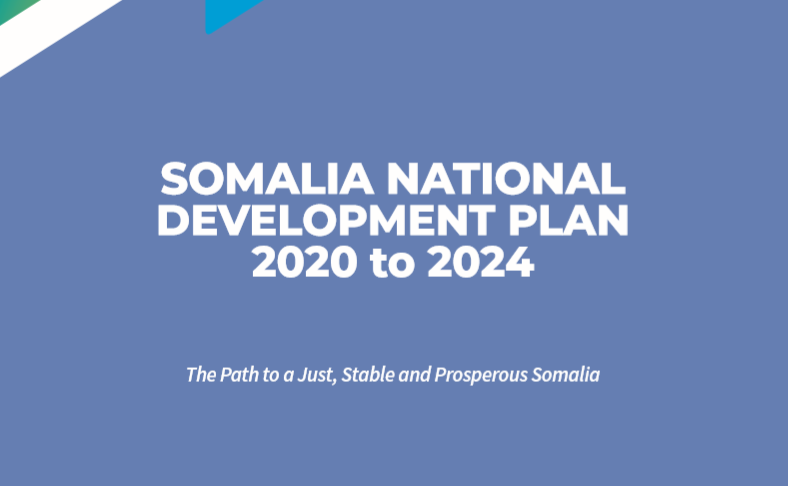#NDP9: What it entails and Somalia’s road-map to poverty reduction

By T. Roble
The newly released 9th National Development Plan is anchored on four pillars namely economic development, social development, inclusive politics and security and rule of law.
The development blueprint which is the 9th since 1962 and largely focused on poverty reduction identifies causes of poverty in Somalia and identifies interventions classed in four categories as pillars.
The Plan outlines four drivers of poverty in Somalia namely, conflict and political stability; natural disaster; insecurity and the weak rule of law; and poor governance. These drivers are each paired with the four interventions marked as pillars.
SUB-THEMES
These pillars are further broken down into subthemes. To realise the pillar on inclusive politics, the report calls for deepening of the federalization process, stabilization and establishment of local governance and finalization ratification and implementation of the Constitution. Other areas include preparation and conduct of fair and credible polls in 2020 and 2024.
On Security and Rule of Law, the plan proposes reform and strengthening of the security sector, judicial reforms, improvement of access to justice and bolstering capacity for service delivery by police forces.
To realise the Economic Development goal, the government should play an enhanced role in creating enabling business environment, regulation of markets, investments in livestock and crop production, boost employment, security and diversify the economy among other measures.
READ ALSO: EXPLAINER: National Development Plan and Somalia’s debt relief process
On Social Development, the Plan envisages improvements in health access and outcomes, education and training of professionals and social protection.
The report notes that 69% of the Somali population live below the international poverty line of US$1.90 a day with women, youth and IDPs being the most affected. The situation is exacerbated by the fact that women, who form 56% of the population and are most disadvantaged generate up to 70 percent of household income but are under-represented in the formal labour force.
Drawing lessons from the NDP 8 which it described as ‘over-ambitious’, the drafters of the NDP 9 zeroed in on the four pillars instead of 9 as captured by NDP 8 which runs out this month from 2017.
“By focusing interventions in these four pillars, Somalia will be addressing the root causes of poverty,” the report notes.
NDP 9 FINANCING
According to the 400-page Plan, Somalia will have to find alternatives to supplement the government’s budgetary resources to finance implementation of NDP-9 priorities. One source for consideration is the off-budget development expenditures by the development partners, the Plan notes. Key to financing the Plan is costing which the drafters indicate should be completed by June 2020.
Total donor expenditures on NDP-8 pillars amounted to US$1,371.1 million and US$1,135.8 million in 2017 and 2018, respectively and are projected to decline to US$941.6 million in 2019. Most of the Official Development Assistance (ODA) went to disaster management, food security, social protection, environmental protection, and migration and refugees. Economic growth got the least allocation.
According to the Plan’s projections, administration, security and defense will still gobble up most of the government’s expenditure in the short term (2019-22) but expenditures in social sectors are expected to increase during this period.
Tax reform is estimated to increase domestic revenue collection from US$172.5 million in 2018 to US$286.5 million in 2022 and grants which will continue to be a major source of revenue will stabilize at around 45 and 46% in the same period.
However, bilateral aid is projected to decline as a source of revenue from 36 percent in 2019 to about 9 percent annually between 2020 and 2022. Multilateral debt is in turn projected to rise from about 9 percent in 2019 to 36 percent annually between 2020 and 2022.